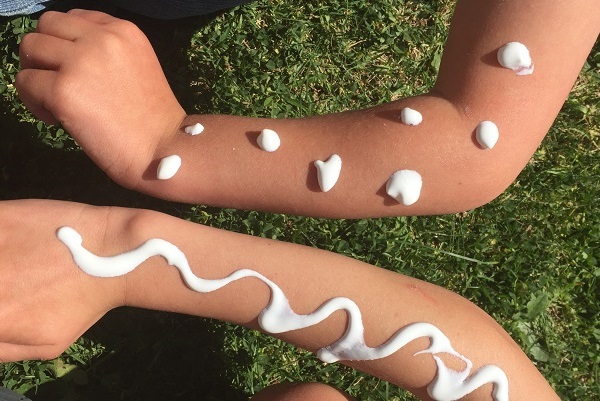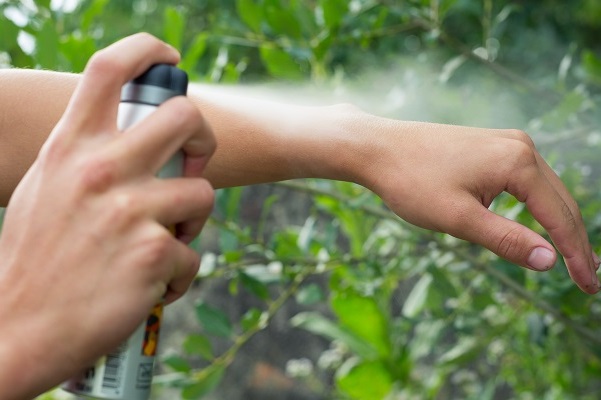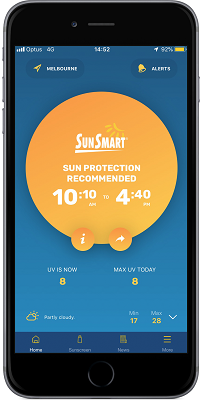
In the lead up to holiday season, we’re encouraging Aussies to avoid using aerosol sunscreens following new evidence that it’s extremely difficult to get good levels of UV protection from these products.
Aerosol sunscreens first came onto the scene in the 1990s. They heralded a new era of sunscreen application and were thought to provide a viable alternative for those who wanted a no-mess, non-greasy product that was quick and easy to apply. The product grew to be particularly popular with families who found application on busy children much easier.
Aerosol sunscreen as an easy and novel form of sun protection was almost too good to be true. Turns out it was exactly that.
Cancer Council is now strongly advising against the use of aerosol sunscreen following new research indicating that it is extremely difficult to get good levels of UV protection from these products, leaving many Aussies at risk of sunburn and skin damage that can lead to cancer.
QUT (Queensland University of Technology) looked at the amount of sunscreen vs. propellant in nine popular commercially available aerosol sunscreen products. Results showed spray times required to achieve the level of UV protection as stated on the aerosol ranged from 4- to 14- seconds per limb, or 29- to 98 seconds for a full body application.
Importantly, this was in controlled laboratory conditions – it would be even harder to get the right coverage when used in everyday situations such as the beach. In addition, some aerosol products contained less than half sunscreen, with the rest propellant. This means consumers have no way of knowing how much sunscreen they’re purchasing making correct application almost impossible.

We’ve unpacked a few things about aerosols and the research below:
1. What is propellant and how do aerosols work?
In simple terms, a propellant is the means by which the product is dispensed out of a container.
In aerosol sunscreens, the sunscreen to be dispensed is held under pressure by a gas, called a propellant. When a valve is released, the gas drives out the product as spray or foam.
2. What impact does the amount of propellant in aerosol sunscreen have?
The amount of propellant directly impacts the sunscreen portion in the product. The more propellant, the less sunscreen and the more product that’s required to ensure adequate SPF coverage is achieved.
Some products contained less than 50% sunscreen with the rest propellant. This means it’s difficult to apply the right amount of sunscreen to be protected.
3. What does the packaging on aerosol sunscreen advise consumers?
The packaging typically advises consumers to ‘use liberally’ or ‘apply generously’. This means different things to different people and is open to interpretation.
In order to achieve adequate levels of UV protection, the research showed spray times varied from 4 to 14 seconds per limb and 29 to 98 seconds for a full body application in lab conditions. If that doesn’t sound like a lot, test it out yourself. You might be surprised at how long a minute feels when you’re applying sunscreen! Most people tend to spritz on their aerosol sunscreen like bug spray, and this just won’t cut it if you want protection from UV.
4. Why should Aussies be concerned about the research?
The effectiveness of sunscreen depends on applying the correct quantity in the right way. The research has shown that it’s very difficult to know how much aerosol sunscreen to apply to achieve adequate SPF coverage. Good sun protection shouldn’t be a matter of guesswork.
Insufficient sunscreen application leaves Aussies vulnerable to the damaging effects of UV which can lead to skin cancer. And no-one wants sunburn to ruin their summer holidays!
5. What is Cancer Council recommending?
Our advice is to avoid using aerosol sunscreen and to use a cream or lotion instead because that way it’s easier to see that you’ve applied the right amount.
And importantly, never rely on sunscreen alone – regardless of type. When the UV is 3 and above, use all five forms of sun protection – Slip on sun protective clothing, Slop on sunscreen (preferably cream or lotion), Slap on a broad-brim hat, Seek shade and Slide on sunglasses.
You can get the sun protection times and UV level from the Bureau of Meteorology on our free SunSmart app. UV levels right across the country reach extreme levels over summer meaning skin can be damaged in as little as 11 minutes, making sun protection vital.
 SunSmart app showing sun protection times and UV level
SunSmart app showing sun protection times and UV level
6. How much sunscreen should Aussies be using?
We recommend in the first instance, covering exposed skin with protective clothing and a broad-brim hat.
For any uncovered skin, apply SPF30 (or higher) broad-spectrum, water resistant sunscreen. Use seven teaspoons of sunscreen for full body application: one teaspoon for each arm and leg, one for the front of the torso, one for the back, and one for the face, neck and ears.
Sunscreen should be applied 20 minutes before going outside and reapplied every two hours, or more if swimming, sweating or towel-drying. Find a formula you like because then you’re more likely to use it.
The full report can be found online Testing and Evaluating Aerosol Sunscreens .
Visit sunsmart.com.au for more tips on protecting you and your family this summer.